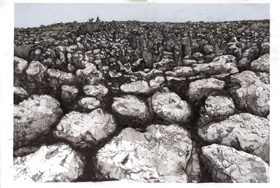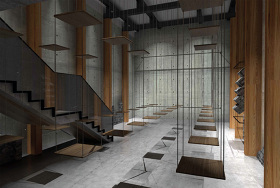
Marco Duthie
MArch (Prof) Thesis Supervisor: Daniel K. Brown
School of Architecture, Victoria University of Wellington
Duthie, Marco. THE FORGOTTEN EMPIRE : Master of Architecture (Professional) 2015.
"The permanent is only an extended form of the temporary. And, if you believe in the laws of the conservation of matter and energy, even the new is only the old in another form." Lebbeus Woods
Abstract: Many UNESCO World Heritage Sites are still inhabited, which can lead to new architecture being constructed that damages the site both archaeologically and environmentally. Forcibly removing these buildings is hampered by debate over the right of the inhabitants to live there. These are considered to be ‘living heritage sites’, the inhabitants serving an important role in continuing the ‘intangible heritage’: social practices, music, rituals, language, etc. UNESCO’s mandate to protect, conserve and manage these sites can be at odds with the development and economic needs of the local populations.
This thesis looks at one such site, Vijayanagara, City of Victory in Hampi, South India. The greater site is 236 sq kms and incorporates one small city, 28 villages and a total population of 59,941 inhabitants. The archaeologically significant central core of the site covers an area of about 40 sq kms and is inhabited by 24,000 people. It includes 10 guesthouses, 15 small hotels, more than 140 shops, 47 houses and an ashram. This core zone has had a major impact on enhancing the economy of the site through tourism. But unregulated development is also damaging the site, and in 2012 the government demolished many of the shops and more than 300 inhabitants were forcibly evicted.
This thesis argues that contemporary buildings within World Heritage Sites can be designed to actively protect the ruins within which they are placed, rather than further damaging them. It also argues that they can be designed to integrate visually within the ruins without losing their own unique contemporary identity. The thesis proposes that this can be achieved by incorporating and reinforcing natural features of the site into the architectural design; actively protecting vulnerable areas of the site by ‘curating’ them as special protected features; enhancing the historic narrative of the site by strategically framing elements that may not have previously been noticed or understood; and by re-presenting the contemporary architecture as another important chapter in the on-going history of a ‘living heritage’ site.








































































